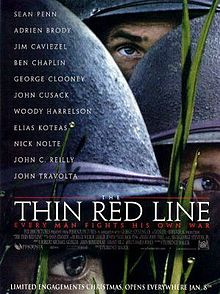
“The mother’s injuries are handed down to the daughter. The mother’s failures are paid for by the daughter.”
Ingmar Bergman directed over 60 films during his career, with a group of regulars in most of his later movies. Autumn Sonata stars one of his regulars, Liv Ullmann, as Eva, the daughter of a concert pianist, Charlotte, played by first-time collaborator Ingrid Bergman. The film is shot in beautiful color by Bergman’s cinematographer Sven Nykvist, using a palette of autumn colors – oranges, reds, yellows. The story is classic Bergman and addresses a theme he based his career off of – our inability to communicate with, and thus connect, with the people closest to us, and the ways we suffer because of it.
Eva is visited by her mother Charlotte after an extended absence. Upon her arrival, Eva surprises her mother by telling her her other daughter, Helena, is there as well. Helena suffers from an extremely disabling muscular disorder (I believe it is cerebral-palsy) and must be under constant supervision. After Helena’s condition became bad enough, she was placed in a hospital and effectively abandoned by their mother, and Eva took her in to watch over her. After a tense day together, Eva and Charlotte are left alone, where Eva confronts Charlotte over her failure as a mother, and the damage and pain she has wrought upon her two daughters. After being confronted with the pain of her children, Charlotte has her own opening, and reveals to Eva her own fears and pains. The film ends with a potential reconciliation on the horizon. Kierkegaard once said that, I’m paraphrasing, only after we have truly broken down all of our borders and revealed ourselves to those around us can we truly love. This is an idea that Bergman brought to all of his work and it is certainly true for this movie. (It is also extremely true, and is something we should all be aware of.)
The film is classic Bergman, and if you’ve never seen a Bergman before you may be shocked by its raw emotion. Eva and Charlotte are aggressive and naked in their confrontation, and is frequently hard to watch. Ullmann in particular excels in this film – I found my stomach writhing with pity watching her sob angrily at her mother. I’ve found Bergman’s color films to be particularly powerful in certain aspects, and conveying pain is one of them. Having said that, if you have indeed never seen a Bergman film this isn’t necessarily the best place to start. The film rehashes themes he explores better in his other works. If you are familiar with Bergman, it is worth watching, but only after getting through his films from his classic period, such as The Seventh Seal, Winter Light, and Persona. I was originally very impressed when considering that this film was released in 1978, given that he was at his peak during the late 50s and early 60s, but then I remember Fanny and Alexander, one of his great works, came out in 1982. If you are going to pick one late Bergman film to see, there is no contest – Fanny and Alexander is a masterpiece.
Having said all of this, I want to make clear that Autumn Sonata is a great movie. While it is not essential Bergman, it is the work of a master in his late period, re-exploring the ideas he wrestled with throughout his oeuvre. The acting and Nykvist’s cinematography are phenomenal. I’m on a quest to see all of Bergman’s films, and Autumn Sonata is definitely not one to skip over, once you’ve made it through the classics.
Click here to see The Criterion Collection’s page on Autumn Sonata.

 “I thought my ideas were so clear. I wanted to make an honest film. No lies whatsoever. I thought I had something so simple to say. Something useful to everybody. A film that could help bury forever all those dead things we carry within ourselves. Instead, I’m the one without the courage to bury anything at all. When did I go wrong? I really have nothing to say, but I want to say it all the same.”
“I thought my ideas were so clear. I wanted to make an honest film. No lies whatsoever. I thought I had something so simple to say. Something useful to everybody. A film that could help bury forever all those dead things we carry within ourselves. Instead, I’m the one without the courage to bury anything at all. When did I go wrong? I really have nothing to say, but I want to say it all the same.”








